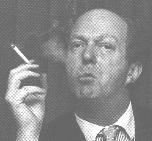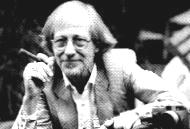Foreword by Auberon Waugh

The terrible example before all our eyes must be what has happened in New York and Los Angeles. As I shook the dust of Los Angeles off my feet for the last time recently, I was aware that on January 1st 1997 a total ban of smoking in bars, clubs and casinos would come into force. This will complement the existing ban on smoking in workplaces and restaurants. The anti-smoking fanatics, whether or not influenced by the hideous pall of evil-smelling smog caused by traffic pollution, in part by the hamburgers gases which add many tons of meat fat to the atmosphere every day, have finally made Los Angeles unbearable. No doubt greed for money will continue to attract Europeans to this unhealthy city, whose vast office buildings now stand as temples of oppression. But we may wonder hoe long the money will be here. The film industry centred around Hollywood is now the biggest single foreign currency earner in the United States. Its rubbish pours out to pollute non-American minds all over the world. But as more and more cinemas ban smoking, their profits fall by the essential margin for survival and the film industry may soon be dead. London is less extreme in the application of the Great Lie about the dangers of passive smoking, but we must all remain vigilant. There can be no conceivable reason why privatised railway companies are even more reluctant to allow smoking carriages than the former nationalized industry, unless the demented attitudes of the nanny state have somehow communicated themselves to the private business. Why should railway companies care whether their passengers who voluntarily choose to smoke in a carriage set aside for the purpose, might damage their health? Those who die younger, rather than older, are doing a great service to their country, in the geriatric explosion which threatens to cripple the economy. Railway companies, in particular, make smaller profits from concessionary old age pensioner fares. What are they playing at? A great development from the persecution has been the spirit of solidarity which has arisen among smokers. Long may it prosper. If we are prepared to abandon our freedom of choice in this matter, we might as well accept direction on what we eat, drink, wear, say and think. Let us hope this book strikes a blow against the new control terrorists.

A lady friend asked why we needed a smoker’s guide to London as people seem to be lighting up in Britain’s capital everywhere she looked, unlike some parts of the USA. Good question. At least she was polite. The day before, a virulent anti-smoker who I’d just met for the first time told me that the very idea of a smokers’ guide was ‘bloody disgusting’ and asked me to put my cigar out. I politely declined as we were in a smoking area at the time, and suggested that intolerance was much more of a social evil than smoking and that he would have got on very well with Adolf Hitler, another ardent anti-smoking fascist. I sat back as he stormed off, enjoying the rest of my cigar, even more convinced that a smokers’ guide was essential if we are to avoid confrontations like this. The first thing I must make clear is that this book is for the adult smoker, someone who has made a personal choice to smoke. You won’t find a list of branded tobacco in the following pages, or specific details of where to buy it. But then you can purchase tobacco at any time of the day or night in London, in its 24 hour shops and garages, if you’re desperate.
What you will discover, for the first time ever, are some of the places in London where smokers are still welcome, and a little on our most famous smokers, Sherlock Holmes…
James Leavey, the Editor of The Forest Guide to Smoking in London, left BT in 1990 after a decade in international marketing and PR and has since written from a growing list of publications including the European, Daily Express, the Independent, Daily Mirror, Radio Times and ES magazine. He has also broadcast on BBC Radio 4’s Breakaway, Going Places and Pick of the Week and worked as stagehand with the English National Opera, been a West End cinema doorman, a coconut ice maker and trained as an actor and teacher. In 1995, he edited Taylors Corporate Northern Ireland, the first major independent business guide to the province and now edits The Humidor, a cigar newsletter published by JJ Fox (St. James’s) Ltd.

Jan Olofsson, the Photographer of The Forest Guide to Smoking in London, was one of Sweden’s first rock stars (Known in the late Fifties as Rock-Ola) before he went to Hamburg, met the Beatles and came to London to work as a photographer in the Swinging Sixties. A selection of his photos of pop icons (Jimi Hendrix, Johnny Cash, the Beatles, Rolling Stones, etc.) was published by Tashen as My Sixties. He also produced for his own company, Young Blood Records, several hit records in the Seventies including one of Rod Stewart’s early hits, In a Broken Dream, and the classic football anthem, Nice One Cyril.
